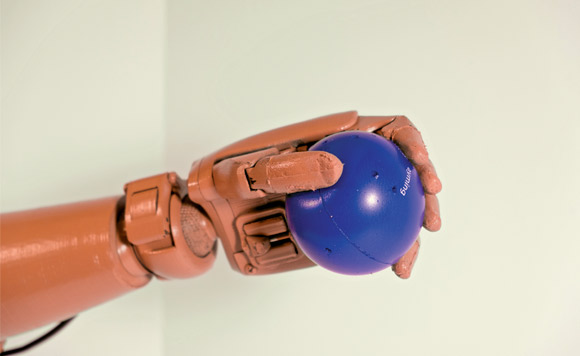by Jesse Holth –
Victoria Hand Project (VHP) is a not-for-profit organization focused on providing low-cost, upper-limb prosthetics. In many parts of the world, a lack of local resources – as well as the prohibitive cost – can prevent people from accessing the prosthetic devices they need. VHP has created a device through 3D printing which allows the cost to be significantly reduced. Including the necessary materials, the clinician fee for fitting the device, and the technician fee for assembling the device, VHP can provide a prosthetic limb for only US$300. This is a huge reduction in cost, and eliminates the need for second-hand devices from other countries – devices which have not been custom made for the user, and can cause problems due to improper fit.
Michael Peirone, the Chief Operating Officer at VHP, says that conventional prosthetics can cost a few thousand dollars in materials alone. With 3D printing, Victoria Hand Project has been able to provide arms to 280 amputees around the world. “Every patient fitting is special. People so grateful after receiving a hand.” When I ask if any specific stories stand out, he recalls when he fit his very first patient in Nepal in 2016. “He had been missing his arm for 20 years and had never had a prosthetic hand. He had to travel for a day to Kathmandu to receive the hand. When arrived, he was hiding his missing limb under his jacket because he didn’t want to show that he was an amputee. By the end of the fitting session, he couldn’t stop smiling and wanted to pose for photos. He said it felt good to have two hands again.”
Peirone explains that the team at VHP is focused on the provision of low-cost, upper-limb prosthetics. He says it’s very rewarding to provide someone with their own hand, boosting their self-esteem and giving them the ability to receive steady work in order to support themselves or their family. VHP has clinics in Cambodia, Nepal, Haiti, Guatemala, Ecuador, and Egypt. The limbs are made in-country, with help from locals, which allows the cost to remain low and brings a sense of pride within the community. VHP works in partnership with established prosthetic clinics in each country, such as Range of Motion Project (Guatemala and Ecuador), Nepal Orthopaedic Hospital (Nepal), ArcHubPNH (Cambodia), and Enable International Haiti (Haiti). By training the staff at existing clinics, as well as establishing 3D print centres, VHP enables knowledge and technology transfer to empower in-country healthcare.
VHP has received funding from Grand Challenges Canada and Google.org, and provides school presentations in the Victoria area, as well as tours to local school groups. There is a great deal of support for the project, even beyond Vancouver Island, and people reach out to VHP from other parts of B.C., Canada, and even the United States, Europe, South America, Africa and Asia. Peirone says that anyone is welcome to make a monetary donation to help provide someone with a hand. “For every CDN$400 raised, we can provide a hand to someone .” He adds that it is also very helpful when people share about VHP on social media. The ability to provide an affordable, highly functional, 3D-printed prosthetic is certainly worth our support. VHP is changing lives, one limb at a time.
For more information, visit www.victoriahandproject.com.




